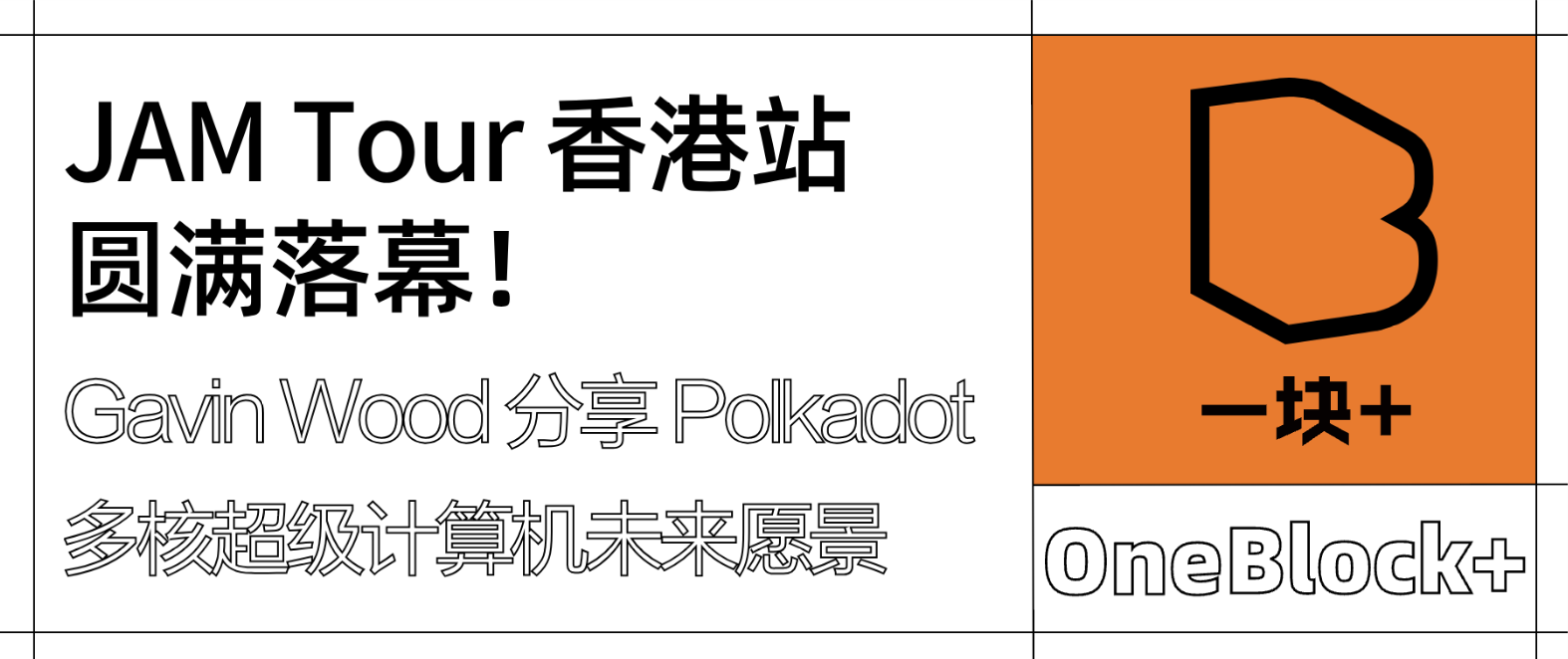
As the co-founder of Ethereum and founder of the Polkadot ecosystem, Dr. Gavin Wood has been committed to promoting the cutting-edge development of blockchain technology. In 2025, the "JAM Tour" global tour initiated by Gavin Wood has traveled through three cities: Cambridge, England, New Delhi, India, and Mumbai, India. February 17 was the fourth stop of the 2025 JAM Tour. Gavin Wood arrived in Hong Kong and personally demonstrated how JAM technology has evolved on the basis of traditional blockchain and become the core of the next generation of distributed, decentralized computing networks.
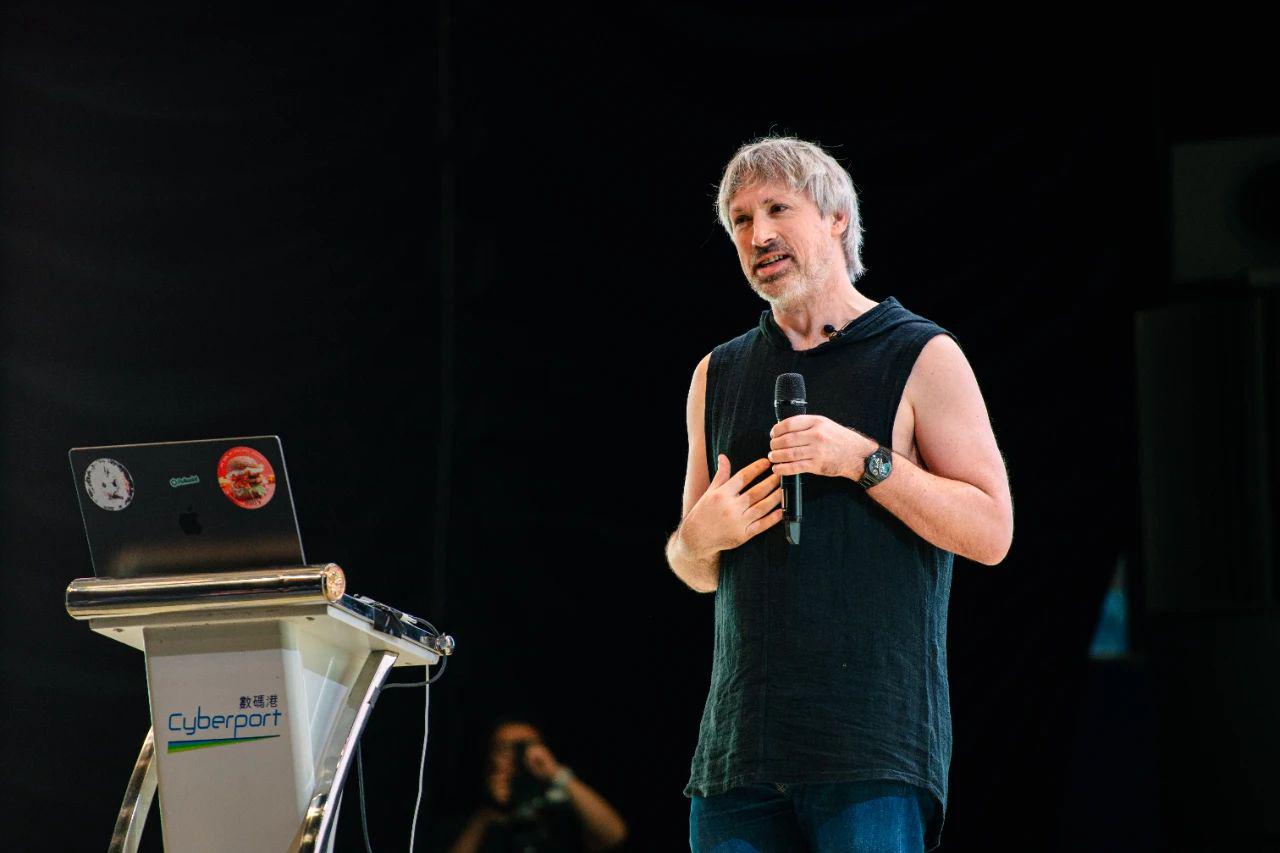
As a warm-up event for JAM Tour, the Pre-JAM event also concluded successfully in Hong Kong on the same day. Both events attracted many industry participants, including organizers: Pala Labs, OneBlock+, Cyberport, Polkaport East, PolkaWorld, OpenGuild, EasyA, PaperMoon and Edgetributor SubDAO.
This article will take you through the Pre-JAM event on February 17 and Dr. Gavin Wood's wonderful speech in Hong Kong, and let you feel the shock and inspiration of this tour. In addition, the JAM Tour will continue to visit four cities, Beijing, Shanghai, Hangzhou, and Shenzhen from February 26 to March 5. The registration link is attached at the end of the article, don't miss it!
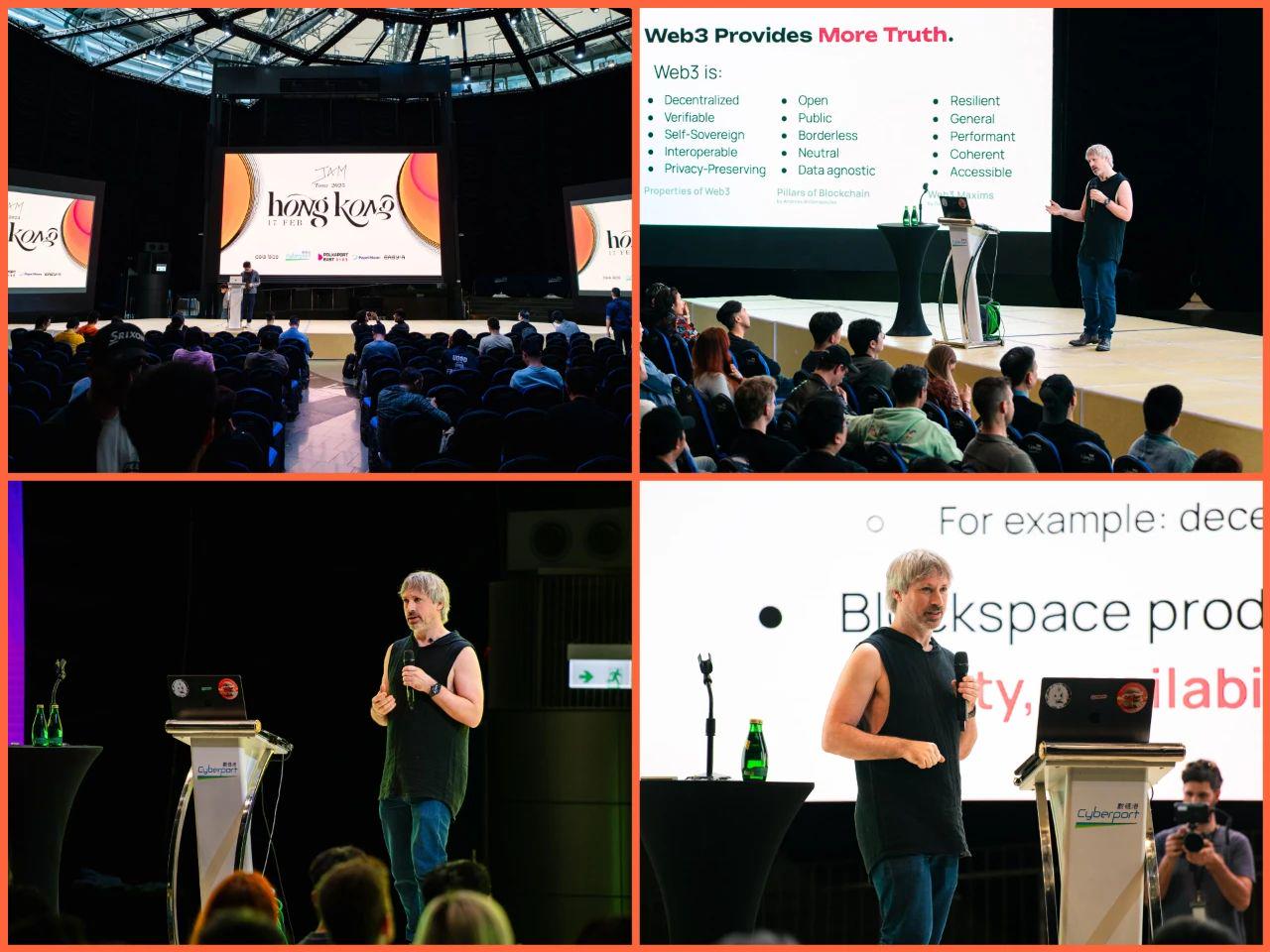
Pre-JAM: Connecting the Polkadot Asian Community
The warm-up event "Pre-JAM" was held as scheduled in Hong Kong from 12:00 to 16:00 on February 17, with the theme of "Build on Polkadot 2.0: What comes before JAM?". Tommi Enenkel, head of Polkadot Ecosystem Development, and Zhou Jun, DevRel from PaperMoon, delivered keynote speeches. The event also included a roundtable discussion with participants including Yuki Pan, head of Asia from PaperMoon, Dixon, marketing manager of OneBlock+, Patricia, core contributor of OpenGuild, Phil, co-founder of EasyA, and Kristen, head of research at PolkaWorld. Finally, three hackathon project teams presented and shared their experiences. Here is a wonderful review of the Pre-JAM event.
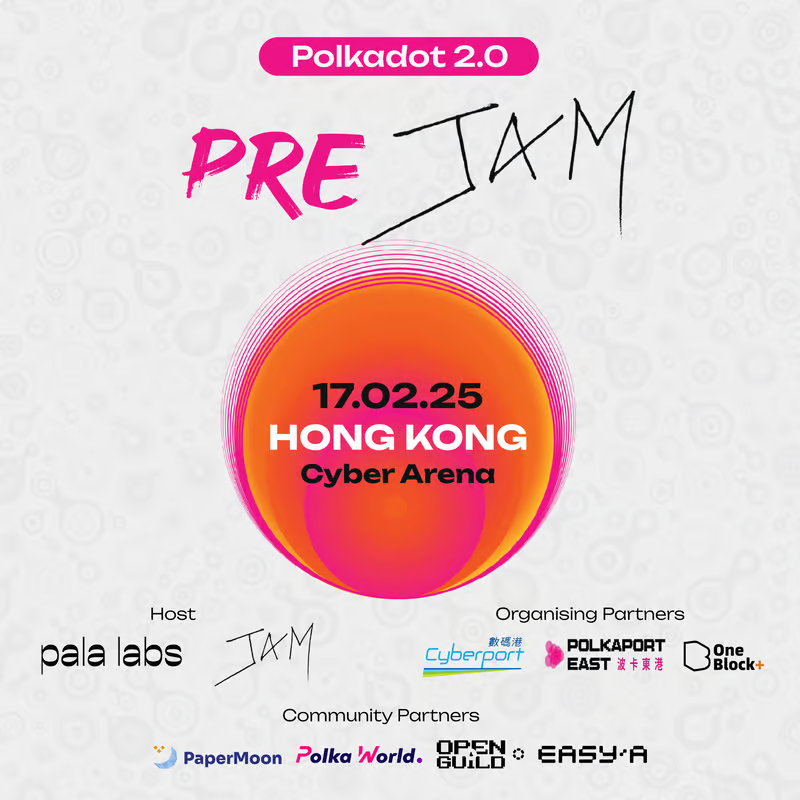
Polkadot 2025 Roadmap: Why build JAM?
At the beginning of the event, Tommi Enenkel (also known as Alice und Bob), head of Polkadot's ecological development, delivered a speech entitled "Polkadot Roadmap 2025+ | What are we building JAM for?" He gave a detailed introduction to Polkadot's evolution from the Parachains architecture of version 1.0, to Coretime and faster block generation technology of version 2.0, and to the future JAM technology evolution route. Tommi emphasized that JAM is a multi-core computing technology that can support a variety of applications running on Polkadot Cloud, bringing excellent scalability. He also explained how JAM implements service shared caching and transaction-free programming models, and introduced how Polkadot Hub can become a unified entry point for users and developers, providing Ethereum compatibility and simplified API access, thereby promoting the further development of the Polkadot ecosystem.
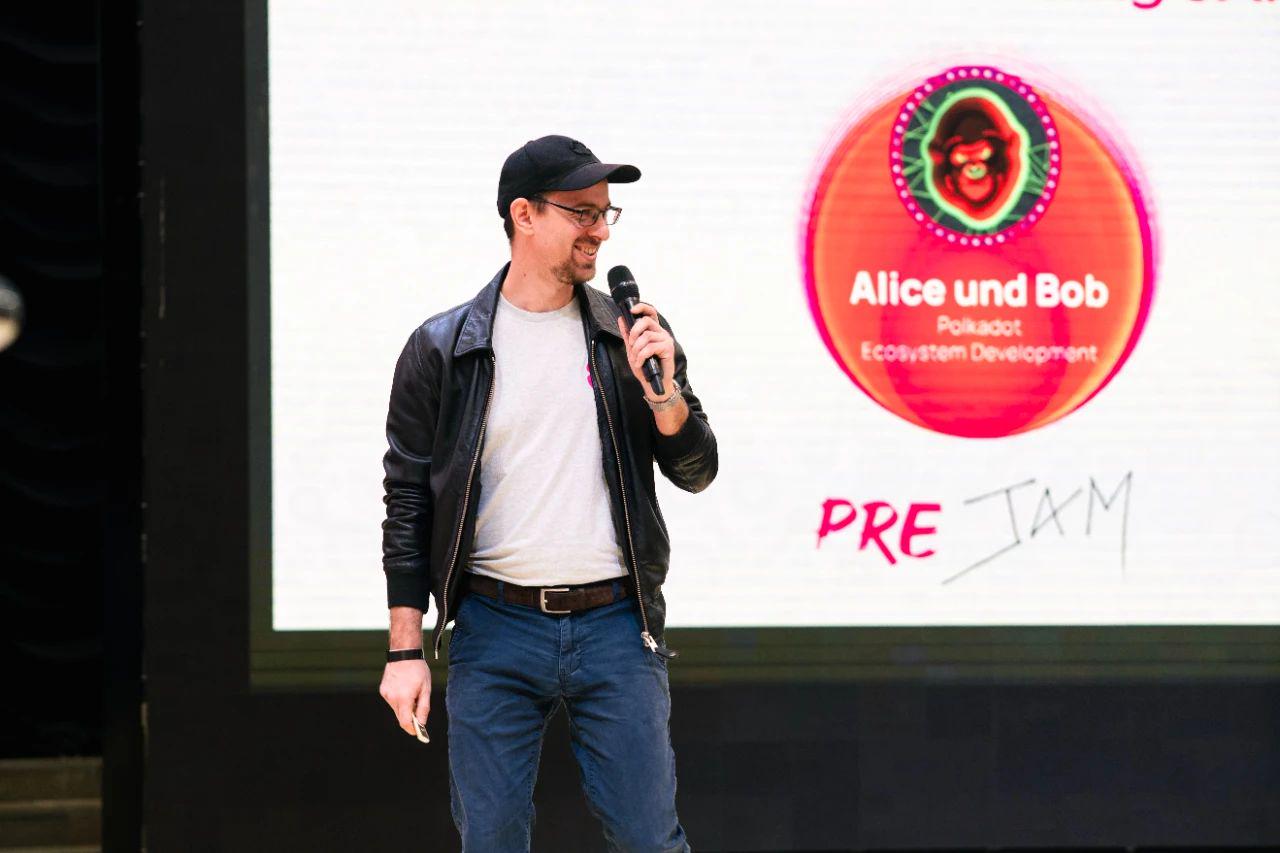
How the Polkadot Chinese community drives innovation
Zhou Jun from PaperMoon DevRel gave a speech titled "How the Polkadot Chinese Community Drives Innovation". From the relay chain and Substrate SDK, to parachain development, slot auctions, PolkaVM, to the latest JAM universal services and multi-language clients, PaperMoon closely follows the development of the Polkadot technology stack and provides Chinese developers with a full range of technical support and documentation resources. Looking ahead, PaperMoon will continue to expand Polkadot's influence in China through primary and advanced Polkadot courses, online and offline exchanges, support hackathons and entrepreneurial project incubation, and assist developers in applying for Web3 grants.
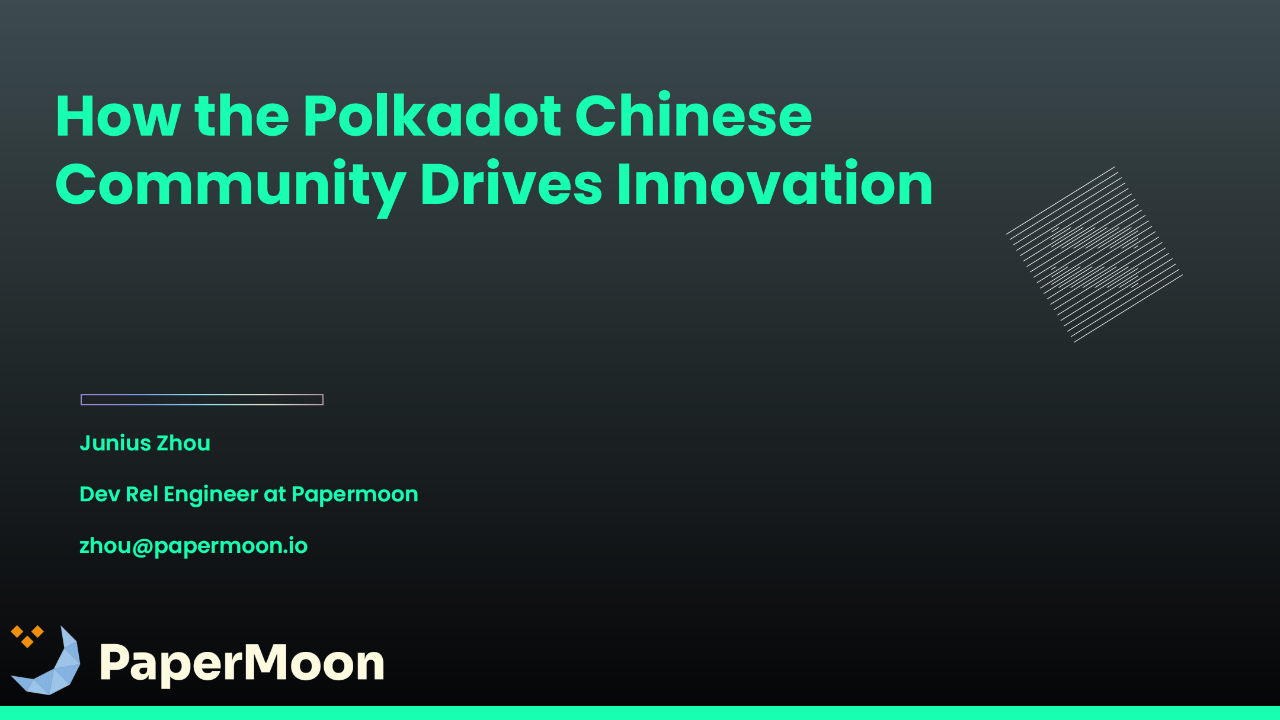
Roundtable discussion: Polkadot ecosystem construction in Asia
In the roundtable discussion, Yuki Pan, Asia director of PaperMoon, Dixon, marketing manager of OneBlock+, Patricia, core contributor of OpenGuild, Phil, co-founder of EasyA, and Kristen, head of research at PolkaWorld, participated in the discussion on the theme of "Building With Polkadot in Asia". The discussion revolved around the construction and development of the Polkadot ecosystem in Asia, explored the adaptability of Polkadot technology in different markets in Asia and its future expansion potential, and how to leverage the unique advantages of Polkadot to promote innovation and cooperation.
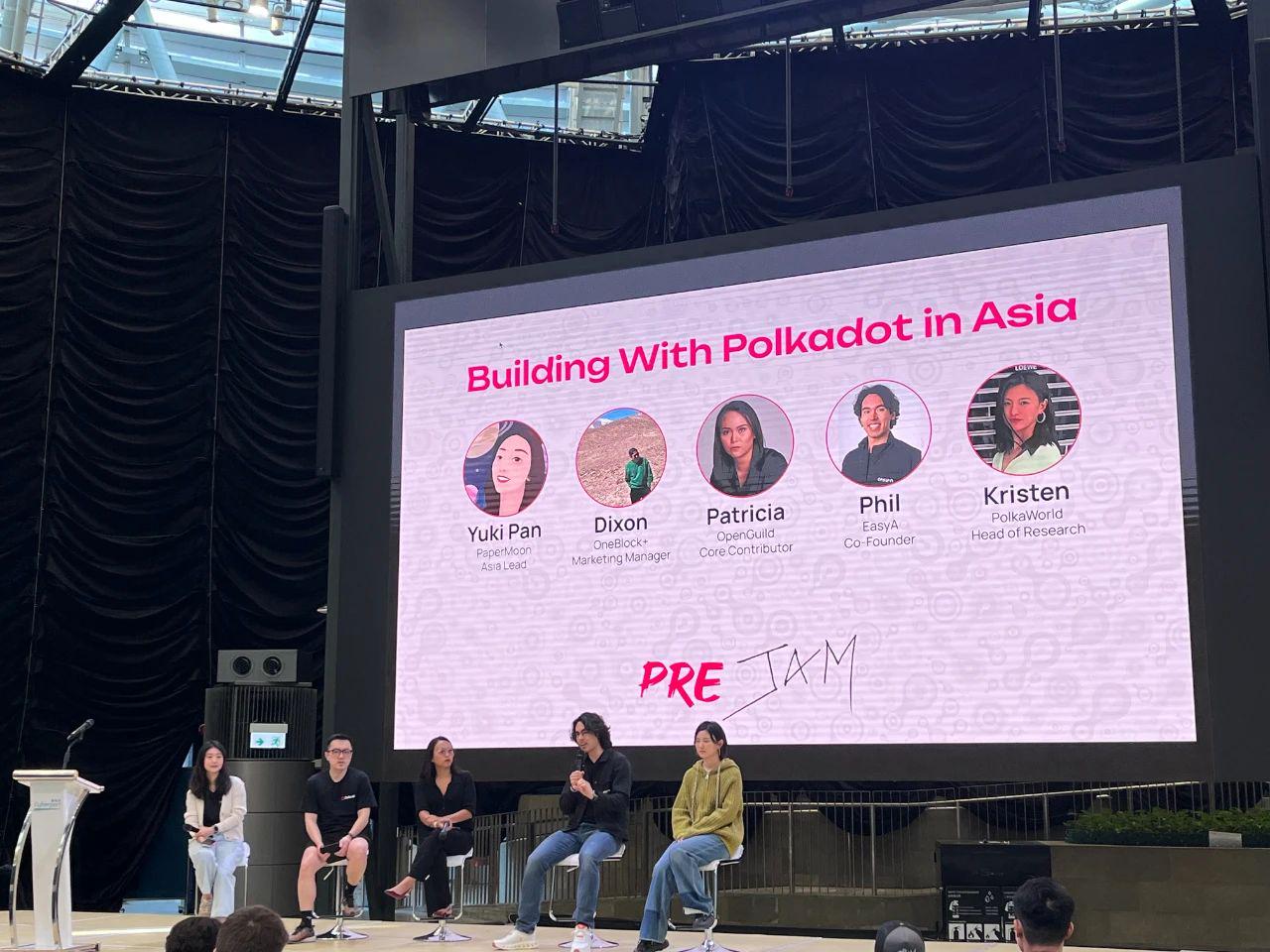
2024 Hackathon Review and Project Showcase
OneBlock+ Marketing Manager Dixon reviewed the data results of the 2024 Polkadot Hackathon. In 2024, OneBlock+ successfully held two Polkadot Hackathons, one in Singapore in September and one in Bangkok in November. The two competitions attracted 611 participants from more than 44 countries, with a total of 191 projects submitted and 399,000 social media exposures.
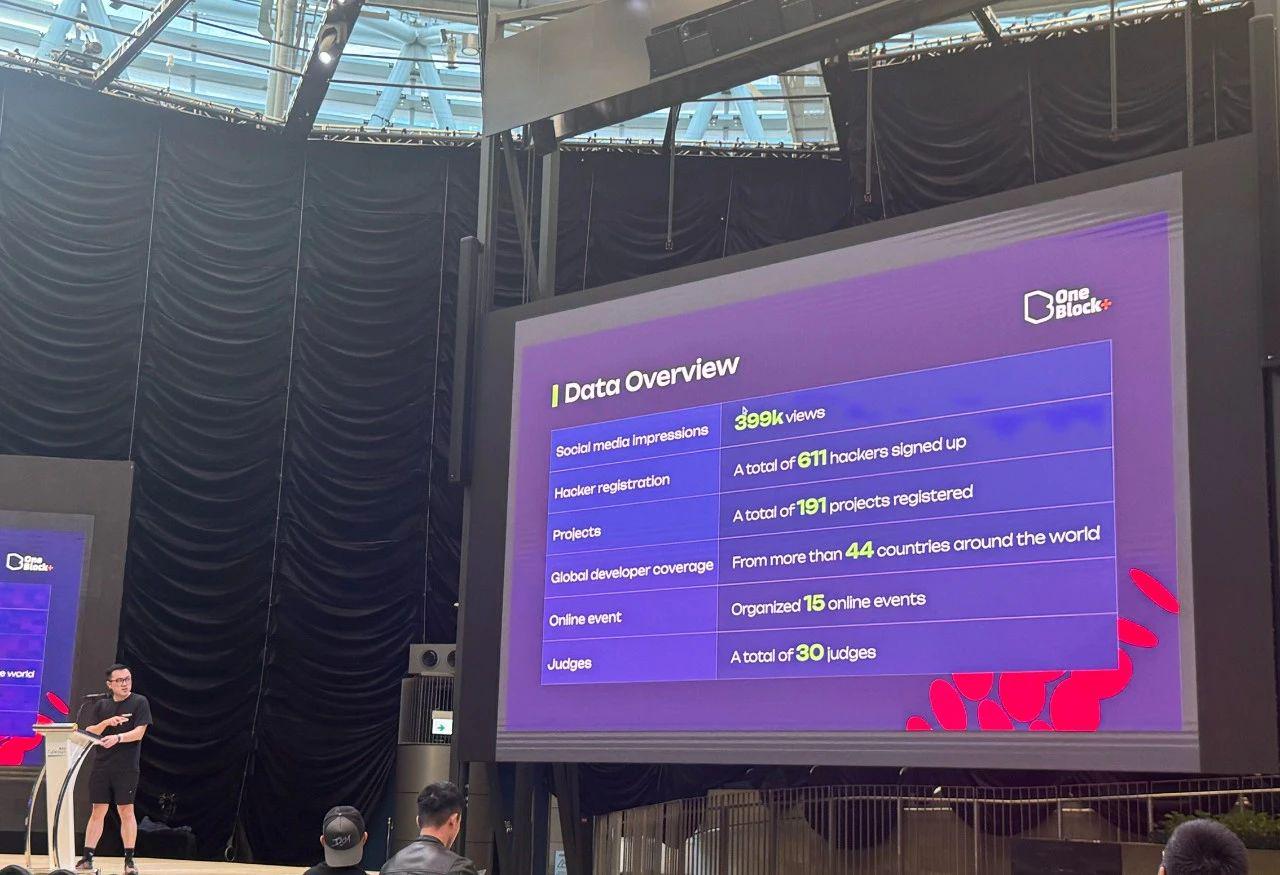
The following hackathon project presentation session showcased several innovative solutions. The kZero wallet team deeply analyzed the pain points of the current wallet ecosystem, elaborated in detail how they improve asset security through innovative architecture, and shared their long-term vision to promote large-scale adoption of Web3. Cyferio Hub, a decentralized cryptographic collaborative caching layer based on Substrate, emphasized the importance of privacy in blockchain and introduced its use cases in DEX, governance, AI, and gaming. The anti-MEV automatic market maker project NoSandwichSwap shared the urgency of solving the MEV problem and detailed how its innovative core architecture can effectively prevent sandwich attacks.
JAM Tour Hong Kong: The Vision of a Decentralized Multi-core Supercomputer
After the Pre-JAM event, the JAM Tour Hong Kong Station officially kicked off. Starting from the challenges and bottlenecks faced by current blockchain technology, Dr. Gavin Wood deeply analyzed the background of JAM's birth, the innovation of its core architecture, its technological advantages and its grand vision for the future, showing the audience a brand new blockchain future.

🔗 The following images are from:
https://x.com/alice_und_bob/status/1891426087504150826
The current status and challenges of blockchain technology
Gavin Wood first talked about the fundamental challenges facing current blockchain technology. Traditional blockchains, such as BTC, although they excel in security and reliability, are not universal and cannot run various programs; Ethereum, although universal, has serious bottlenecks in scalability; Solana expands the network by improving hardware performance, but sacrifices the core concept of decentralization; Ethereum's rollup solution did not achieve the expected results, leading to interoperability issues between different networks; the multi-chain model adopted by Cosmos has certain advantages, but the economic security is low and requires continuous addition of bridges. Even Polkadot's parallel chain model faces the problem of state separation and high cost of building chains. These problems prevent the Web3 ecosystem from providing a smooth user experience like cloud computing.
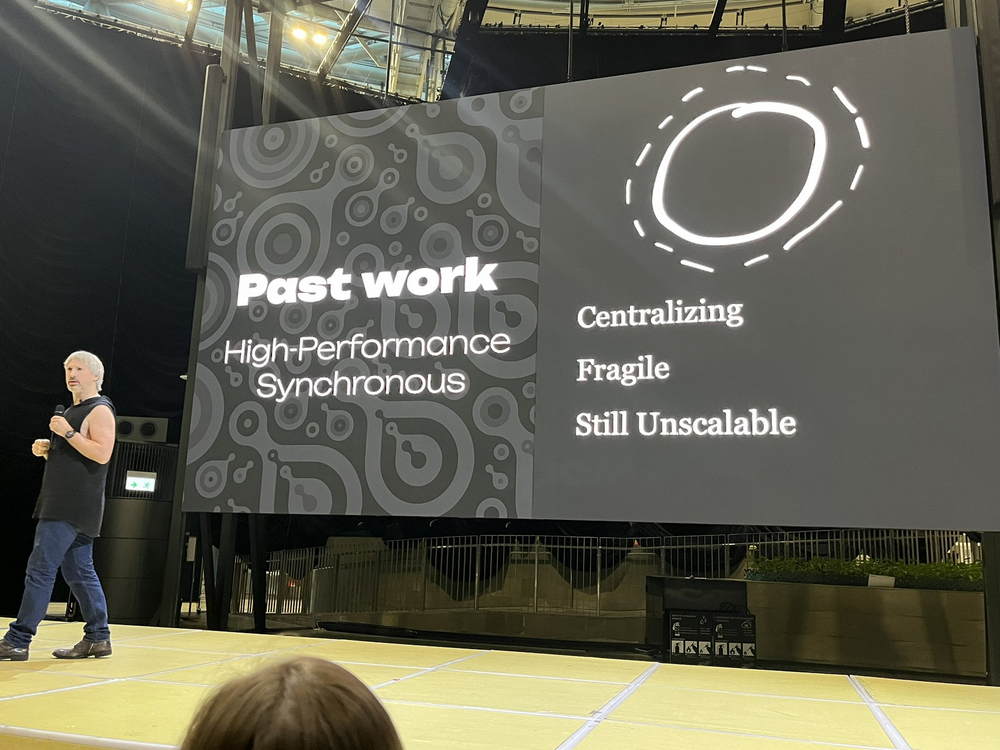
The Birth of JAM: Reinventing the Supercomputer
Gavin said that their goal is to build a powerful application cloud that can work seamlessly, which is not yet achieved by existing cryptocurrency systems. So how to solve this problem? Gavin mentioned that a machine is needed that can maximize the generation of Web3 cloud resources-this is what technicians call "blockspace". Polkadot is already providing a large amount of high-quality block space and ranks first in several key areas. But this is still not enough to meet the demand. Although Polkadot has achieved the goals of Ethereum's 2029 roadmap, they still need to further improve and continue to evolve.
To this end, Gavin and 35 teams jointly created a revolutionary project - JAM. JAM aims to build the first truly decentralized multi-core supercomputer and fundamentally redesign the blockchain architecture. Gavin emphasized that the main problem with existing blockchain technology lies in its design: with each additional node, the network's processing speed will decrease, which runs counter to the expansion method of traditional distributed systems.
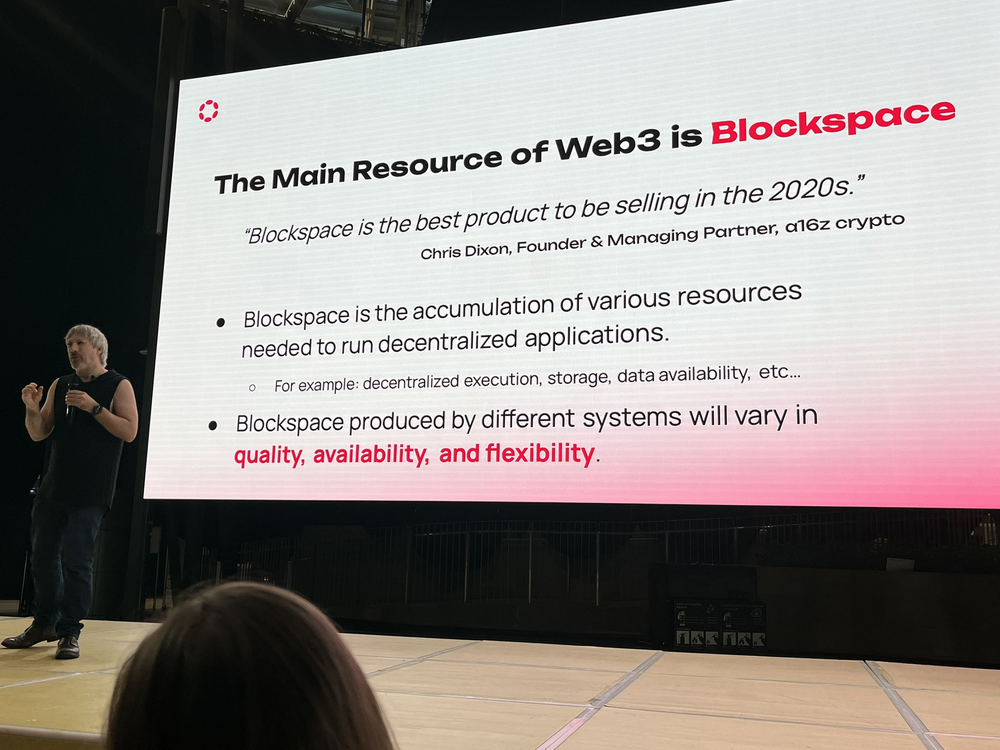
Distributed Data Lake: JAM’s Core Architectural Innovation
JAM introduces a new solution: designing a decentralized distributed data lake where all applications store their states and other applications can read the data from it. This design enables applications to collaborate seamlessly, and workloads can be processed in sequence and sent to each core, ultimately achieving multi-core distributed computing.
The basic unit of JAM is a "service", each of which is responsible for performing specific tasks on the core. These services can run various applications, such as the CoreChains service running Polkadot's parallel chain, and other services can run zk-Rollups, smart contracts, Cosmos chains, etc. JAM is unique in that it avoids creating a virtual machine with poor performance, but directly converts instructions into a language that the CPU can understand, allowing PVM to achieve 45% of the native execution speed. This means that JAM can run real applications, not just those "weird" experiments that are common in the cryptocurrency field.
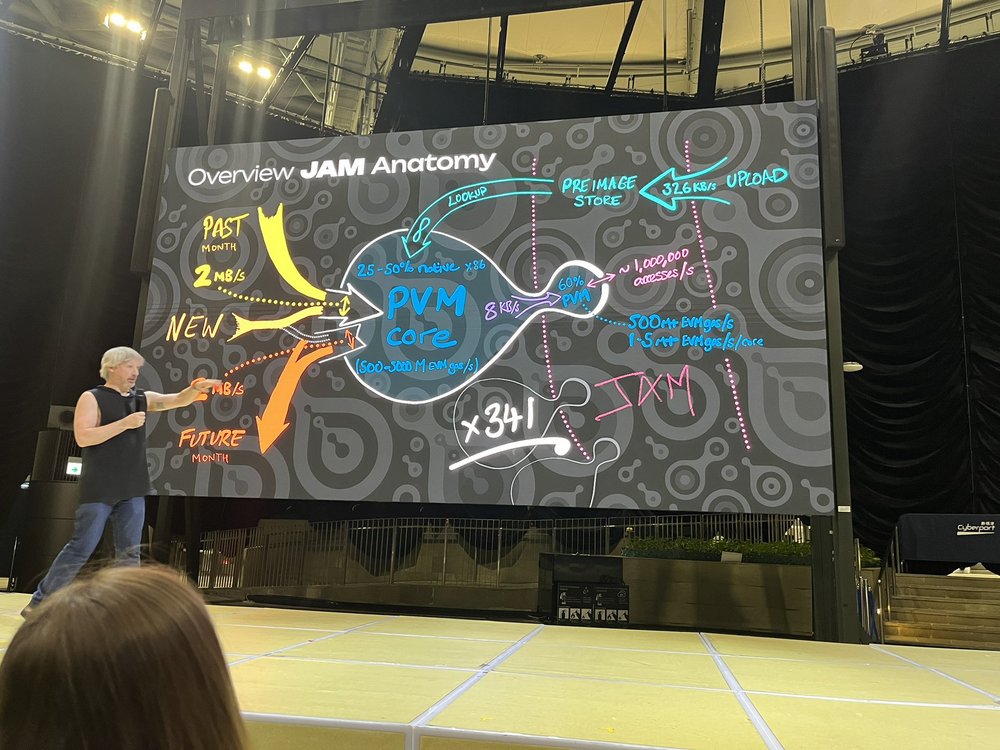
CorePlay: True blockchain cloud computing
JAM's vision is further expanded through CorePlay. CorePlay aims to solve the growing fragmentation problem in the current blockchain ecosystem. Instead of having multiple applications running in parallel and waiting for each other, it adopts an on-demand approach, sending work to the sequencer and then bundling it to the appropriate core for processing.
This approach enables a true cloud computing experience: developers do not have to worry about which core the application runs on when deploying the application, the system will automatically allocate resources. Ultimately, JAM provides a fragmentation-free, latency-free smart contract system that can process trillions of EVM gas per second.
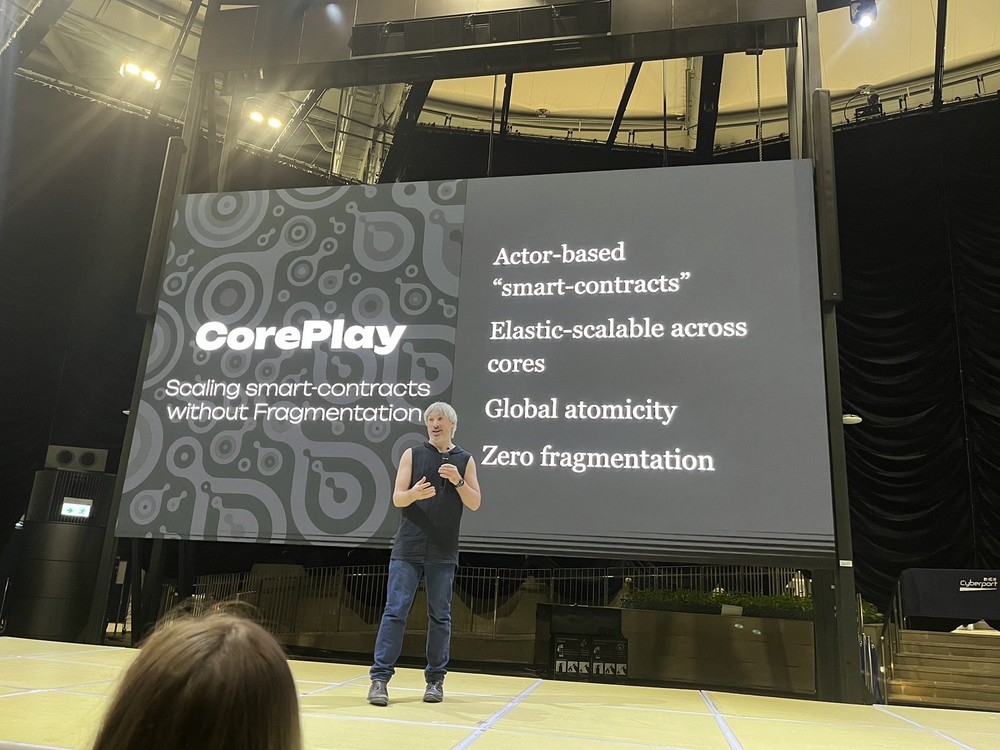
JAM's competitiveness and future vision
Gavin Wood made a clear point: whoever can provide the largest shared execution space and state space and is economically affordable will win the blockchain competition. JAM has 341 high-performance cores, each of which performs better than ordinary computers, forming a powerful supercomputer network.
Through this innovative design, JAM hopes to solve the core challenges currently facing Web3, provide a truly available, efficient and economical infrastructure for decentralized applications, and ultimately make blockchain technology a platform that supports global computing.
Registration is now open for JAM Tour in four cities across China !
The JAM Tour Hong Kong has come to a successful conclusion. Next, the JAM Tour will enter Beijing, Shanghai, Hangzhou, and Shenzhen from February 26 to March 5. Register now and use the referral code "ONEBLOCK_JAMTOUR" for priority admission! Whether you are a student, developer, or blockchain enthusiast, you can meet Gavin Wood here and explore the future of Web3! Details and registration link 👇
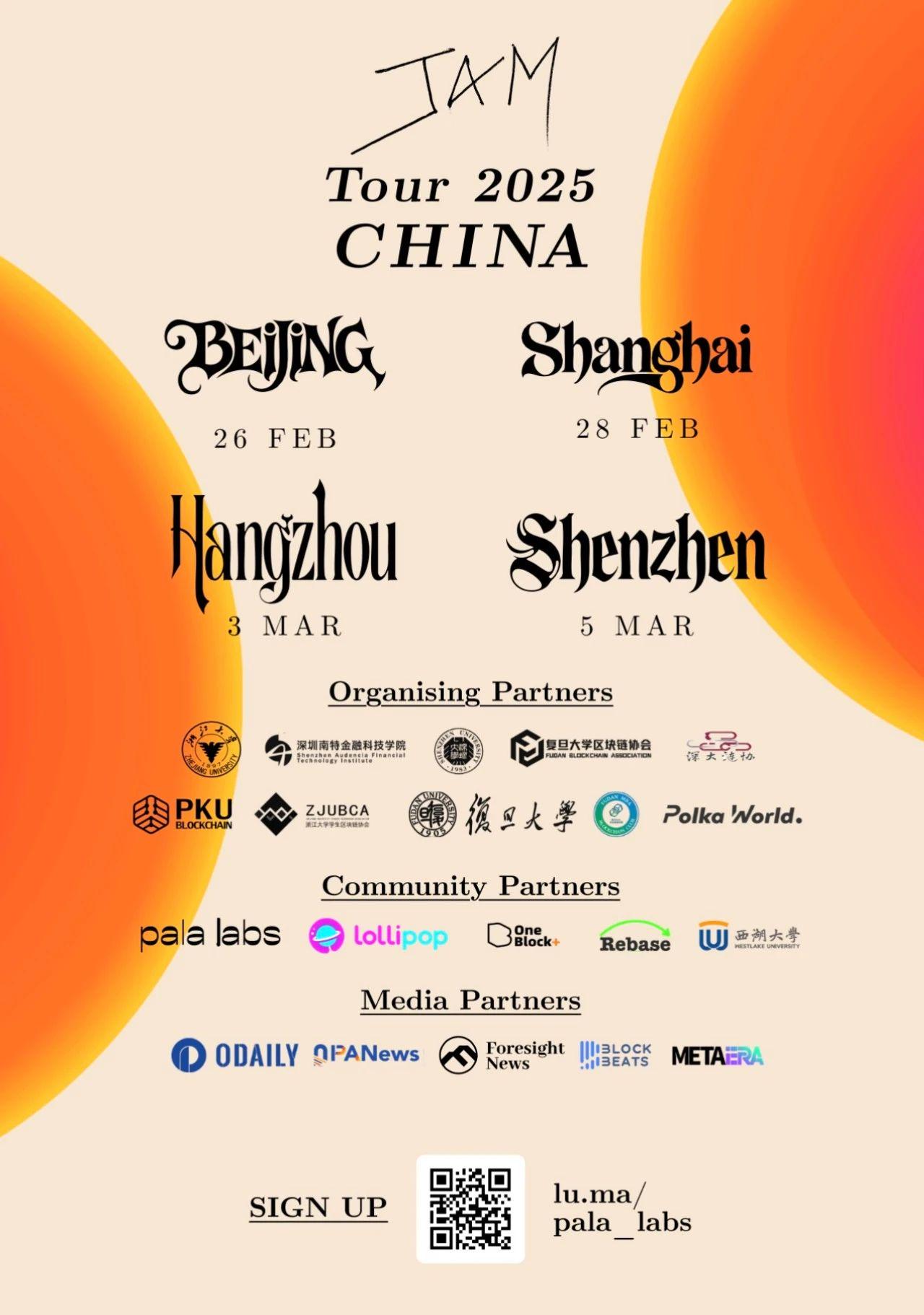
📊 Beijing Railway Station
🗓️ Date: February 26, 2025 (Wednesday)
📍 Location: Peking University Yingjie Exchange Center
🔗 Registration link: https://lu.ma/JAM_Beijing
📊Shanghai Station
🗓️ Date: February 28, 2025 (Friday)
📍 Location: Fudan University, Shanghai (Handan Campus)
🔗 Registration link: https://lu.ma/JAM_Shanghai
📊Hangzhou Station
🗓️ Date: March 3, 2025 (Monday)
📍 Location: Zhejiang University (Zijingang Campus)
🔗 Registration link: https://lu.ma/JAM_Hangzhou
📊Shenzhen Station
🗓️ Date: March 5, 2025 (Wednesday)
📍 Location: Shenzhen University - Shenzhen Nantes Institute of Financial Technology
🔗 Registration link: https://lu.ma/JAM_Shenzhen












